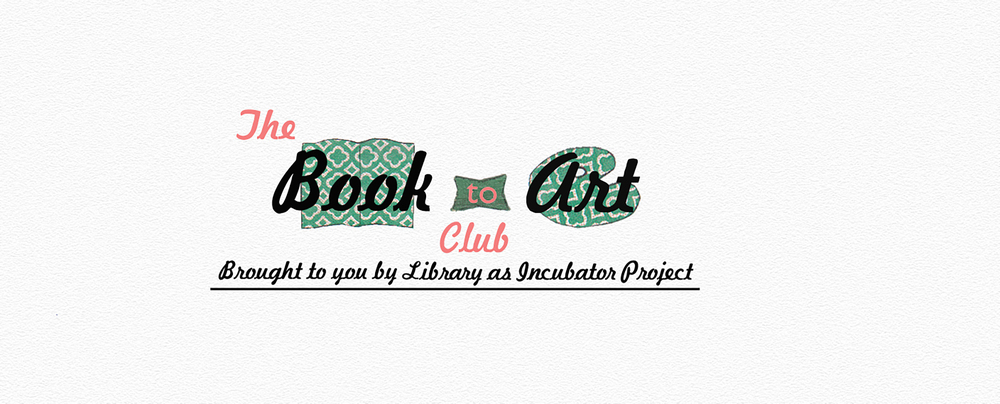
Last year as I was searching online for something other than what I found, I came across the Library as Incubators Project website. Started by three University of Wisconsin School of Library Information Studies students, Erinn Batykefer, Laura Damon-Moore, and Christina Jones, its mission is to demonstrate that libraries are a place to create and to connect. I was struck by the creativity behind this but most significantly, I was struck by the offshoot of this organization, which is the Book to Art Club. It puts a new spin on book clubs by encouraging these events not only to be a meaningful discussion but also a time in which book club members make something inspired by the book that they read.
I knew we had to sign up and register our school as our own chapter within this larger book to art club movement. Our chapter can be found here. With an impressive list of books that have already been explored in a book to art club, our chapter was able to recycle an art project centered around the book Liar and Spy by Rebecca Stead. There is a book to art club pinterest page with great ideas, which is where I discovered creating invisible ink for Liar and Spy. This time, however, we read Prairie Evers by Ellen Airgood and created our own book art out of old dictionary pages.
I have no doubt that the third book in our book to art club will inspire us to create something great too. We are reading another Georgia book award nominee called Upside Down in the Middle of Nowhere by Julie T. Lamana. I already have some ideas brewing for future masterpieces. As a place to create and to connect, our media center is proud to host our own book to art club chapter.





